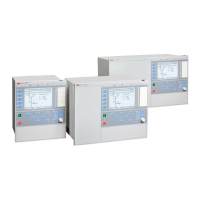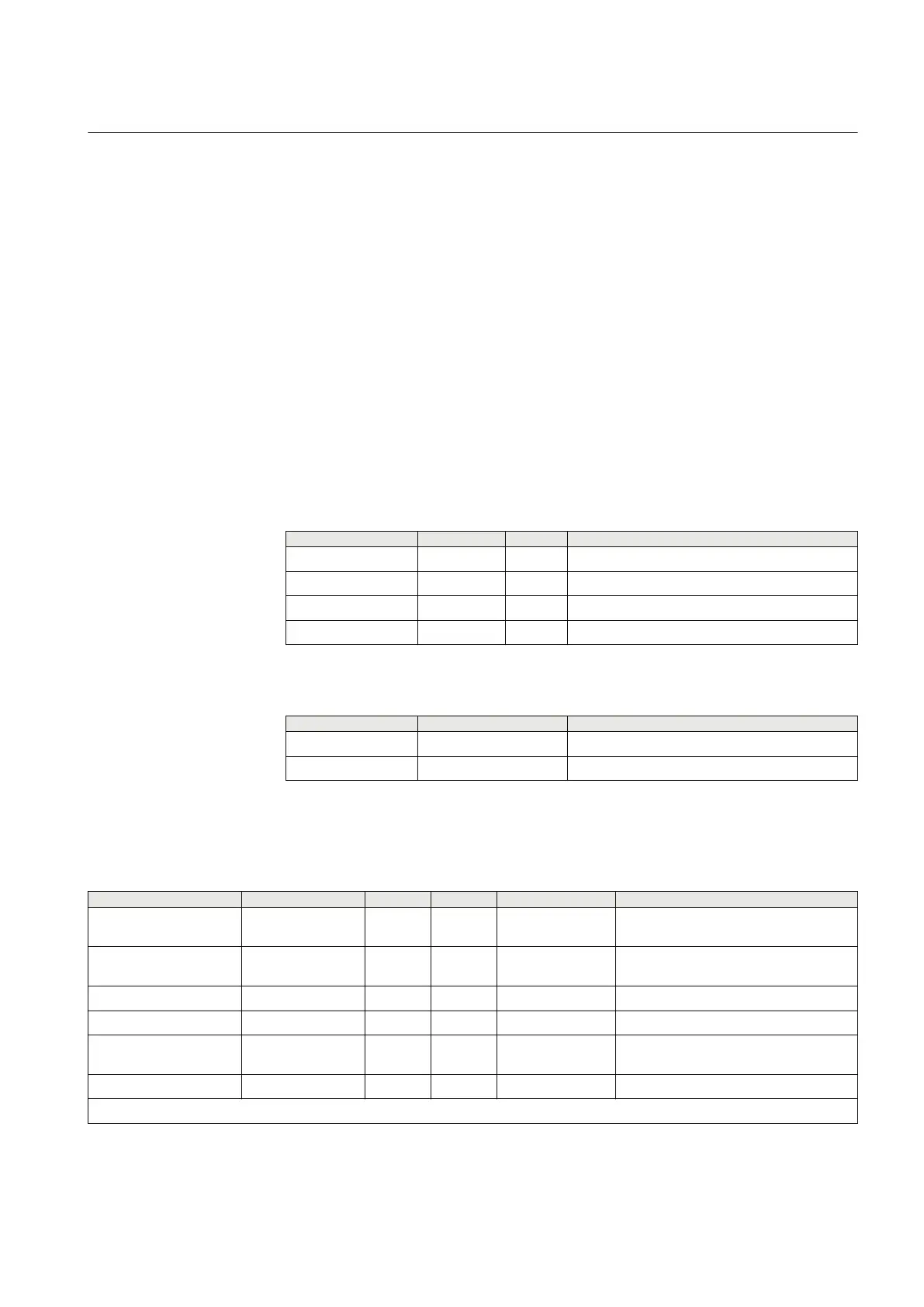networks where the neutral point is earthed through a low resistance, the characteristic
angle is always 0º.
As the amplitude of the residual current is independent of the fault location, the
selectivity of the earth-fault protection is achieved with time coordination.
The use of wattmetric protection gives a possibility to use the dedicated inverse
definite minimum time characteristics. This is applicable in large high-impedance
earthed networks with a large capacitive earth-fault current.
In a network employing a low-impedance earthed system, a medium-size neutral point
resistor is used. Such a resistor gives a resistive earth-fault current component of about
200...400 A for an excessive earth fault. In such a system, the directional residual
power protection gives better possibilities for selectivity enabled by the inverse time
power characteristics.
4.2.6.8 Signals
Table 378: WPWDE Input signals
Name Type Default Description
Io SIGNAL 0 Residual current
Uo SIGNAL 0 Residual voltage
BLOCK BOOLEAN 0=False Block signal for activating the blocking mode
RCA_CTL BOOLEAN 0=False Relay characteristic angle control
Table 379: WPWDE Output signals
Name
Type Description
OPERATE BOOLEAN Operate
START BOOLEAN Start
4.2.6.9 Settings
Table 380: WPWDE Group settings (Basic)
Parameter
Values (Range) Unit Step Default Description
Directional mode 2=Forward
3=Reverse
2=Forward Directional mode
Current start value 0.010...5.000 xIn 0.001 0.010 Minimum operate residual current for
deciding fault direction
Voltage start value 0.010...1.000 xUn 0.001 0.010 Start value for residual voltage
Power start value 0.003...1.000 xPn 0.001 0.003 Start value for residual active power
Reference power 0.050...1.000 xPn 0.001 0.150 Reference value of residual power for
Wattmetric IDMT curves
Characteristic angle -179...180 deg 1 -90 Characteristic angle
Table continues on next page
1MRS758755 A Section 4
Protection functions
REC615 and RER615 371
Technical Manual

